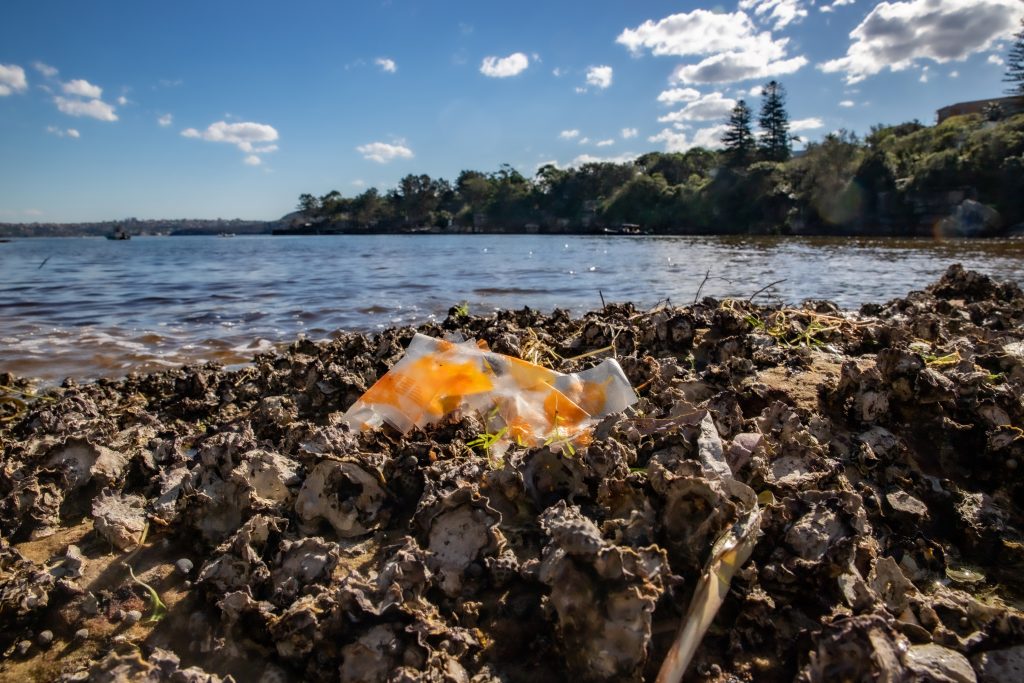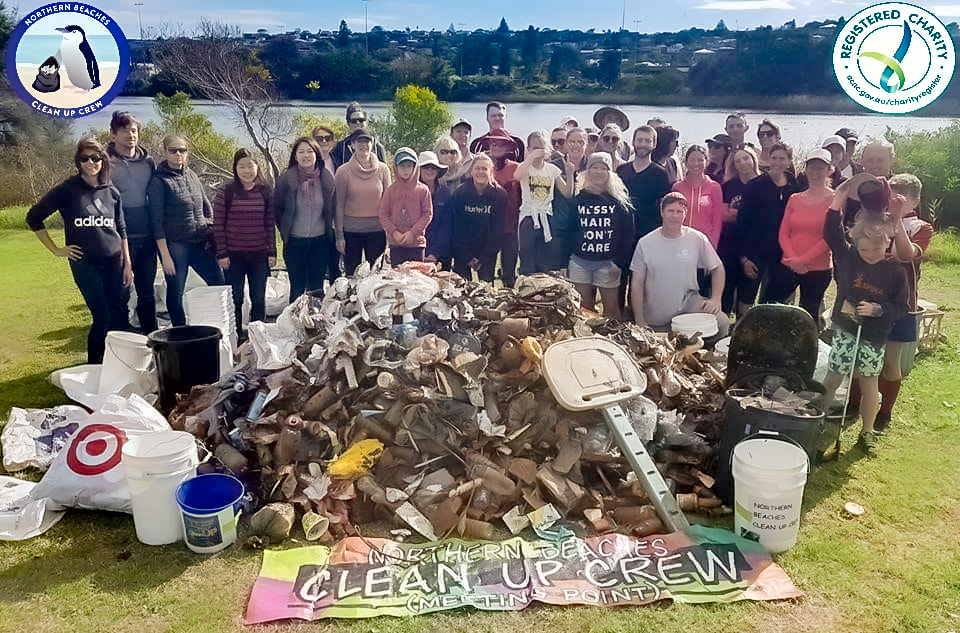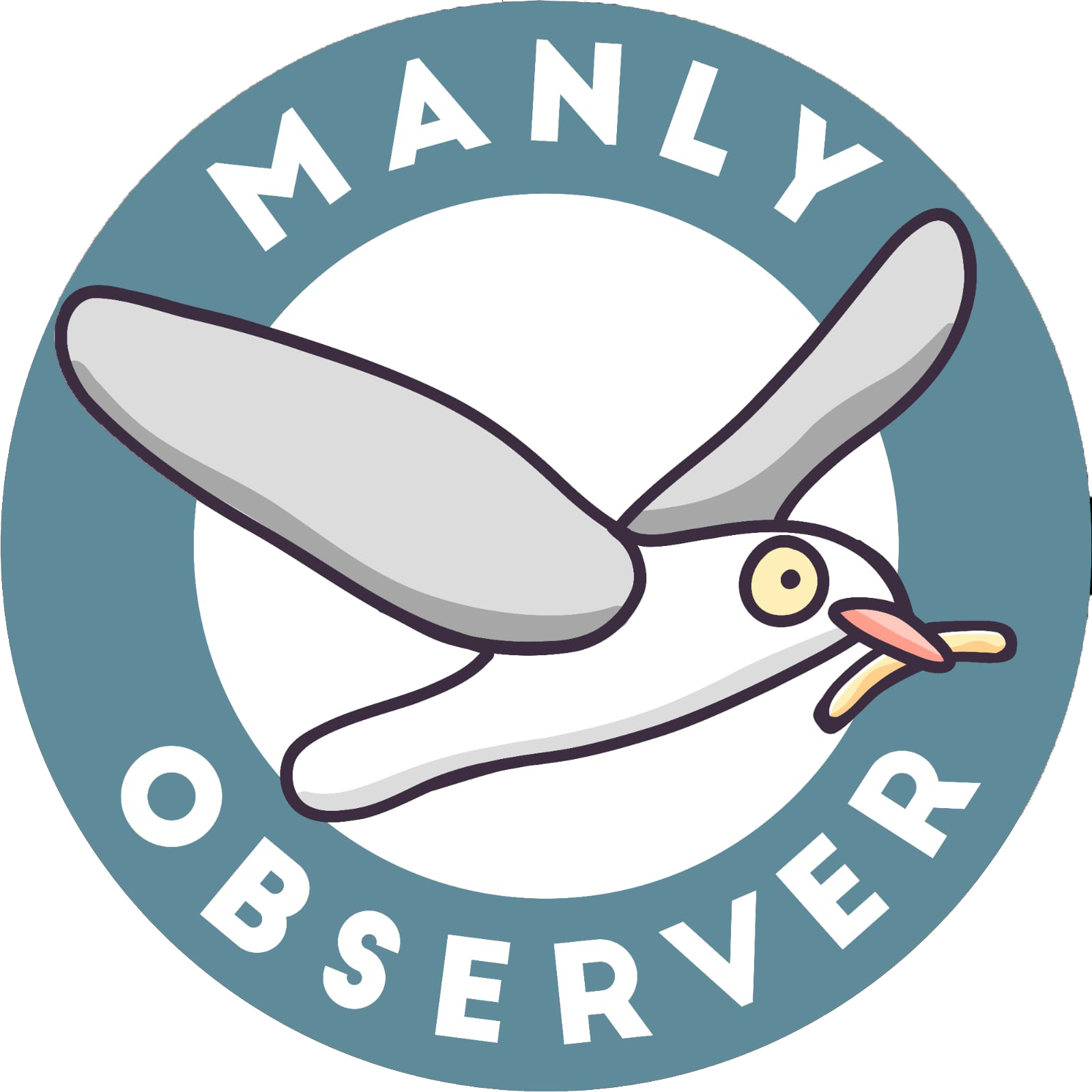The extreme weather events dominating the 2021-22 summer and bringing continuous rain have also brought increased pollution to Sydney’s beaches and waterways.
These contaminants have arrived in many forms, from heightened levels of sewage and industrial run-off in creeks, lagoons and bays, to shorelines and river banks scattered with single-use plastics, food and drink containers and household junk.
Of particular concern are the small fragments of polystyrene foam, typically from eskies, coffee cups and broken buoys, that scatter along shorelines and appear as attractive morsels to birds, turtles, fish and other marine life, which mistake them for seafood.
Northern Beaches Clean Up Crew (NBCUC) is a voluntary non-profit organisation dedicated to keeping our beaches and waterways garbage-free and safe to swim. Manly Observer caught up with founder Malin Frick to learn how they combat the waste flotsam and jetsam along our shorelines and whether lifestyle changes can lessen future problems.
When did she launch the organisation and what was her motivation?
“Northern Beaches Clean Up Crew started in 2014,” she said. “It just started as some friends going for beach walks and at the same time picking up the rubbish that we found on the beaches…
“Since we always had passers-by join us when we picked up rubbish, I thought that a way to teach people to become more aware and join the beach cleaning movement was by starting a Facebook page, and from there it grew.
“Our aims now are educating people about single-use-plastic and how it impacts wildlife and environment, getting a community together for a good deed (we love making new friends and seeing how friendships grow within our group), and at the same time making the area cleaner. After all, who likes a dirty beach?”

Do the clean-up crew just focus on beaches, or do you cover waterways too?
“Since all winds eventually will lead litter to the oceans, we also started to clean up lagoons and creeks, trying to prevent the rubbish from even coming to the beaches. Now, we are cleaning up a mix between beaches, lagoons and creeks.”
What are the most waste common items NBCUC collect in their clean-ups?
“The items we always find on our events (without a doubt) are cigarettes, bottles, cans, single-use coffee cups, soy-fish sauce containers, food wraps such as chocolate bar wraps, plastic straws and cotton buds. I know it may sound strange but there are many cotton buds on the beaches – it is because people keep flushing them down the toilets and they pass through the water cleaning process and end up in the ocean.”
What is the average weight of the waste after a day’s clean-up?
“I cannot really estimate an average weight for our clean-ups, because glass bottles can be really heavy and at times we find really big items like sofas, and even a broken motorbike!
“We sort and count all our rubbish at every clean up and enter that information in a marine debris database that researchers at universities have access to. That way researchers can estimate how many single-use coffee cups are littered every year.
“At some clean-ups we’ve picked up over 500 kilos of rubbish – but the amount varies. At Curl Curl Lagoon we picked up over 20,000 pieces of rubbish and included bicycles, office chairs, rolled up mats, etc.”
What are some of the strangest things you’ve found during a clean-up operation?
“An adult dinosaur suit on Freshwater Beach; a broken motorbike in the reeds at Dee Why Beach; an exercise bike buried in the sand at Dee Why Beach; office chairs; rolled-up mats; old doors; sofas; a broken-off ‘No Parking’ sign – including the pole!; a Buddha statue; a greenhouse; and half a boat!”
What do you do with the waste once it’s collected off the beaches?
“The items we find we try to repurpose if we can. Some crew members like to keep some of the treasures that we find – the greenhouse got a new home, an office chair got a new home, and toys and balls often get new homes by crew members. Bottles and cans, we take to ‘Return and Earn’ to be recycled.
“Bigger items like motorbikes and chairs, etc, we leave in a safe spot and contact the council where we left them, so they can be picked up. We try to recycle as much as we can.”

What measures could we adopt to prevent so much waste going into the sea?
“There are so many things that households and shops could do to reduce waste. Some of the easier things you can do is to challenge yourself to do a grocery shop without buying any items with single-use-plastic. Support local bulk-food shops such as Manly Co-Op, Naked Foods, Scoop and The Source, and also support local farmers’ markets.
“Always bring a reusable cup with you if you are intending to get a takeaway coffee. Ask restaurants if you can bring your own container for takeaway food – it saves the restaurant money and the planet litter. Recycle what you can recycle, take bottles and cans to “Return and Earn” machines – if you can’t get to a machine yourself, contact Re-Collect and they come and pick up your bottles and cans for you for free. You can donate the money to a charity, like Northern Beaches Clean Up Crew.
“The best thing we can do is to reduce our own single-use plastic footprint. If the items are never bought, they cannot be littered. As I often say, ‘If your bathtub is overflowing, you wouldn’t immediately reach for a mop – you would first turn off the tap’. That’s what we need to do about single-use-plastics.
“Refuse balloons, they are the biggest killer of seabirds in the world! There are way better options to show a celebration. You can, for example, contact Boomerang Bunting Northern Beaches and they will lend you their buntings for free. It’s reusable and doesn’t kill any wildlife or pollute the environment.”
NBCUC have recently been focusing on balloon-waste awareness, critical of the popular trend of releasing clusters of them into the sky to celebrate special occasions. In an Instagram post, dated 11 April 2022, NBCUC said: “Balloons are in the top three most harmful waste items to wildlife. Birds and turtles not only ingest balloons, they actively select them as food. This is because a burst balloon often resembles a jellyfish, the natural food sources of many marine species like turtles.
“Ingesting balloons, and the clips and strings attached to them, can cause intestinal blockages and results in a slow painful death through starvation. Marine animals don’t have the gastrointestinal pH levels to breakdown a balloon and for turtles, it may also cause floating syndrome. Trapped gases in the gut can cause a turtle to become buoyant, unable to dive for food—making them vulnerable to boat strikes and leading to starvation and severe dehydration.”
According to a joint CSIRO and Institute for Marine and Antarctic Studies (IMAS) investigation, “balloons are the highest-risk plastic debris item for seabirds – 32 times more likely to kill than ingesting hard plastics… Balloons or balloon fragments were the marine debris most likely to cause mortality, and they killed almost one in five of the seabirds that ingested them.”

How do we join a Northern Beaches Clean Up Crew clean-up?
“Our clean-ups are always the last Sunday of the month at 10am, on a beach or lagoon on Sydney’s Northern Beaches. For our next event, see our website or social media accounts – Instagram and Facebook.”
https://www.instagram.com/northernbeachescleanupcrew/
Web
https://www.northernbeachescleanupcrew.com/
https://www.facebook.com/NorthernBeachesCleanUpCrew/




